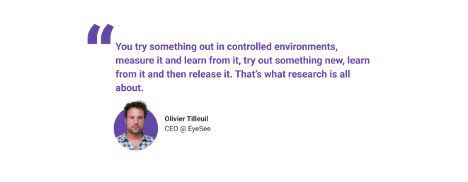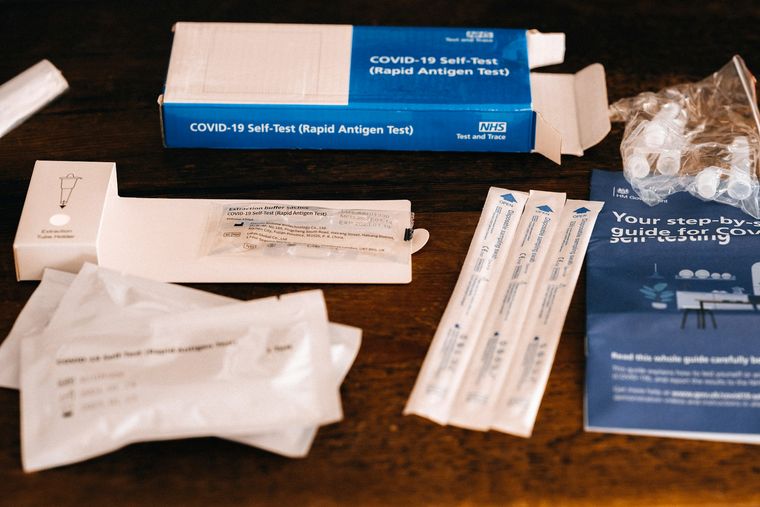Co-branding
How to combat potential pitfalls using behavioural research

I’m a simple individual and perhaps a creature of habit – choosing peanut M&Ms as my go-to sweet snack, relying on Cinnabon k-cups for my daily coffee fix and letting Apple technology keep me well-organized and connected.
While data (and life) confirm I’m not a lone example of a consumer having favorite brands, recent research shows that these loyalties are first to go as we adjust to the mounting pressures of the global recession. Apart from tinkering with variables of pricing and volume, there are other strategies your brand might explore to create eroding loyalty.
In fact, there’s a good chance one of your new favorite products may just be the result of two separate brands working together – the fruit of a co-branding or licensed partnership initiative. If your goals for 2023 include:
Reconnecting with or Expanding your consumer base;
Evolving your brand identity or reputation;
Innovating the product;
And/or all the above…
…then co-branding may be the right strategy for you! However, this approach has certain risks. And mitigating them should be a top priority. Here’s how behavioural research can help. Behavioural market research measures what consumers do – not what they say. A major part of the consumer decision-making process – some say up to 90% of it – actually takes place in the subconscious part of the brain. Therefore, measuring the subconscious can increase predictive power as these insights provide information on how different marketing content stimulates the brain, whether it evokes emotions and how those emotions impact final purchase behaviour.
Know your shifting consumer and (re-frame) their needs
75% of brands could disappear tomorrow … and most consumers wouldn’t care. On top of this, shoppers are already actively engaging in brand-switching behaviour due to rising inflation. By exploring collaborations within or across categories, you are opening a whole world of possibilities to either deepen the connection with existing consumers or expand your base.
Well-known consumer products entering into a partnership with Disney is one such example. Disney-licensed characters are displayed on Huggies diapers, Band-Aid adhesive bandages and even Gucci collections! Disney characters are iconic, instantly recognisable, and intergenerational. Through these collaborations, these brands have managed to overcome their challenges in creating appeal and eliciting an emotional response, which has an enduring effect on retaining brand loyalty but also helps draw consideration among new potential customers.
The journey of successful co-branding begins with understanding the intersection of consumers and their behaviours. Pre-testing your advertising materials (online videos, TVC, social media posts, etc.) and packs can give you crucial insight into how consumers will see, react, evaluate, and if they would ultimately be inspired to purchase your co-branded product. A mixed-method approach, where behavioural methods of eye tracking, facial coding and virtual shopping are combined with surveys, can measure such preferences with as much as an 80% correlation with actual shopping behaviour.
Introduce agile reality-checks to your co-branding initiative
On average, less than 20% of product and pack innovations are a success. Adopting an iterative approach and testing at each step of development increases the chances of yielding a positive result.

More specifically, there are 3 main points where behavioural research can play a big part in shaping your co-branding initiative:
Screening: start testing early in the process (even concepts and drafts!) and narrow down your options. Use more granular sub-category criteria, including usage frequency, understanding brand awareness and openness to purchasing the product, and even filtering on geolocation. With every added testing criterion, the potential risk of a new launch gets smaller.
Test in context: use virtual simulations of stores and retail environments to tap into authentic consumer behaviour with high accuracy. The same goes for e-commerce – any website or webpage, such as Amazon, Target, Kroger can be replicated. Having the ability and agility to put respondents in a context that feels familiar and authentic is key in estimating the success of the co-branding strategy.
Volumetric and Market share projection: test claims, pricing, and other aspects of launch to estimate in-market success, switching behaviour and opportunities for driving share within the first year.
Make co-branding resonate: Optimise at every touchpoint
Experts concur that having a seamless and experience-driven path to purchase is more important now than ever. Shoppers’ expectations are changing – and brands must be aware of the hyper-sensitivity of their customers. Thus, co-branding can be an effective tool to not only enhance a brand or product communication but could also serve as a potential visual cue for highlighting variety or sub-line differences.
Additionally, there are many widely overlooked opportunities within omnichannel – optimising touch points such as e-commerce pack shots being one of them. Hero images can significantly boost sales by attracting more attention. They garner 5% higher visibility than Standard Package Designs on desktop (with even greater potential on mobile because of the smaller screen size) and can increase sales by about 15%. Considering these key touchpoints when implementing a co-branding strategy can significantly boost your chances of success.
Summary
Co-branding is all about expanding opportunities to connect viscerally with the consumer. By introducing new propositions and potentially enhancing communication by leveraging the established equities of each brand, you are generating broader interest and/or emotional response, which has a positive effect on consumer retention.
Adopting behavioural methods and testing within contextual shopping environments allows more authentic and predictive insight into how your co-branded product will perform. This type of feedback minimises the risk of unfruitful investment and represents a definite advantage – even more so under the pressures of recession, where consumers are increasingly fickle and marketing budgets precious.
Jason Bradbury
Sr. Director of Client Service at EyeSeeI really enjoy sharing my knowledge in an effort to help others succeed in overcoming the challenges they face. This was true when I started as a telephone interviewer in a call center, helping my manager to "figure out" how to reboot the CATI software, and still holds for me today (some 25 years later) as I now partner with consumer insights professionals in navigating the ever-changing consumer landscape. As a consumer behavior specialist, my passion is helping my clients to identify strategies that help them in driving shopper growth. My curiosity, empathy and sheer obsession with getting elbow-deep into tasks has served me well and has enabled me to succeed in an insights world littered with constant new challenges to be addressed.


